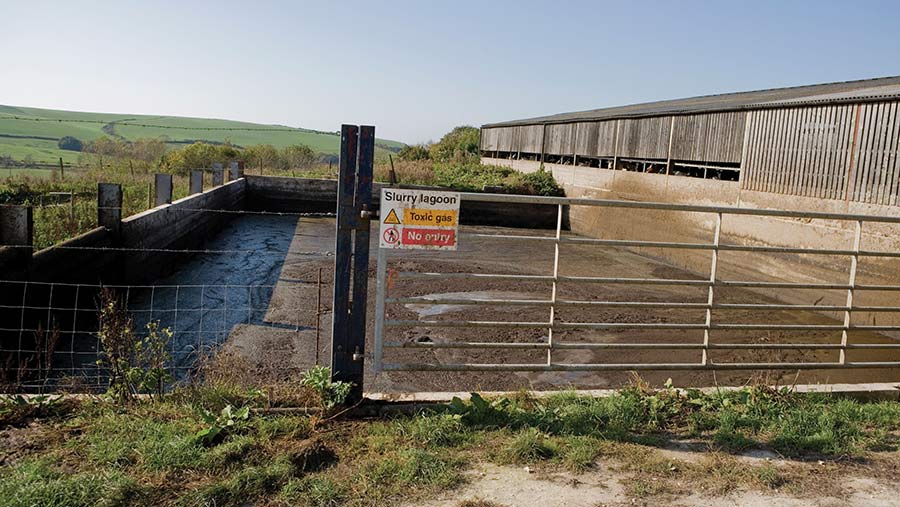New round of Slurry Infrastructure Grant widens options
 A third round of the scheme is expected in 2024 © petographer/Alamy Stock Photo
A third round of the scheme is expected in 2024 © petographer/Alamy Stock Photo The second round of Defra’s Slurry Infrastructure Grant will open next month, with more items added to the list of investment eligible for support.
The main changes from the first round include pig producers now being offered funding for up to eight months’ storage.
See also: Rural England Prosperity Fund – could it help your business develop or diversify?
Grants will also now be available for slurry separators – screw or screen press separator units, gantry and temporary storage of stackable materials – advises Kelly Farm Consulting.
It also includes support for covering existing stores with impermeable covers.
“This option can be used on its own or alongside building a store, but must meet scheme storage requirements and minimum grant thresholds,” says the firm’s Laura Cureton.
An option has been added to build in-situ cast concrete stores as an alternative to circular and panel stores, lagoons and bags.
Also, landlords can now underwrite grant funding agreements.
“This will give tenants more confidence to apply, as under this arrangement, the landlord agrees to take over the agreement if tenant does not complete the project,” says Laura.
Those who were successful in the first round will be contacted by the Rural Payments Agency (RPA) to discuss updating their applications to include these changes if necessary.
Kelly Farm Consulting answers some common questions on the scheme:
Who is eligible to apply?
- Those already producing slurry on a pig, beef or dairy farm in England
- Landlords and tenants – tenants must obtain necessary permissions from the landlord.
How much funding is available?
- £25,000-£250,000 per applicant business in each round
- Final grant payments will be based on the reference cost contribution for the items needed, or 50% of the actual invoice costs at claim stage, whichever is the lowest amount.
What does the grant cover?
The grant will pay for improving storage to six months for beef and dairy and has been increased to eight months for pigs. This includes:
- Investment in stores, covers for existing stores, tanks, reception pits, pumps, pipework, separators, transfer channels, agitators and safety equipment
- Replacing existing stores that are no longer fit for purpose
- Adding additional storage, provided other stores that remain part of your system meet slurry storage regulations, were built to relevant standards and remain fit for purpose
- Expanding an existing store, for example adding another ring to a suitable steel tank
- Covering new and existing stores.
A full list of eligible items, specifications and contributions is on the government website.
Application process
Stage one: Slurry Wizard and online checker
- Use the latest version of the AHDB Slurry Wizard (October 2023) to calculate and understand your current and future slurry storage requirements
- Then complete the online checker to see if you are eligible and how much grant funding you may get
- If there is high demand, projects will be prioritised based on locations with the greatest environmental outcomes. These locations have been updated for round two and will be released in November.
Stage two: Slurry store location and design assessment
- If successful at Stage 1, you will be asked to complete a slurry store location and design assessment form, which will then be assessed by the Environment Agency (EA)
- This must be submitted by 30 September 2024.
Stage three: Full application
- If the EA is satisfied with the location and design assessment, applicants will then be invited to submit a full application by 27 June 2025. This will be assessed by the RPA to ensure the project is viable
- If the full application is successful, the RPA will offer a grant.
Apply in round two
Those who were unsuccessful in round one should reapply, says Laura.
“Round two grant areas have significantly expanded since round one and can be viewed on Magic Map (at Land based schemes > Other schemes – where round 2 is listed as a mapping layer).
“The areas are scored ‘highest’ to ‘moderate.’
“Dependent on the number of applications received, the RPA will prioritise the highest scoring projects, but has advised there will be a round three in 2024 if the project is not successful in round two.”
